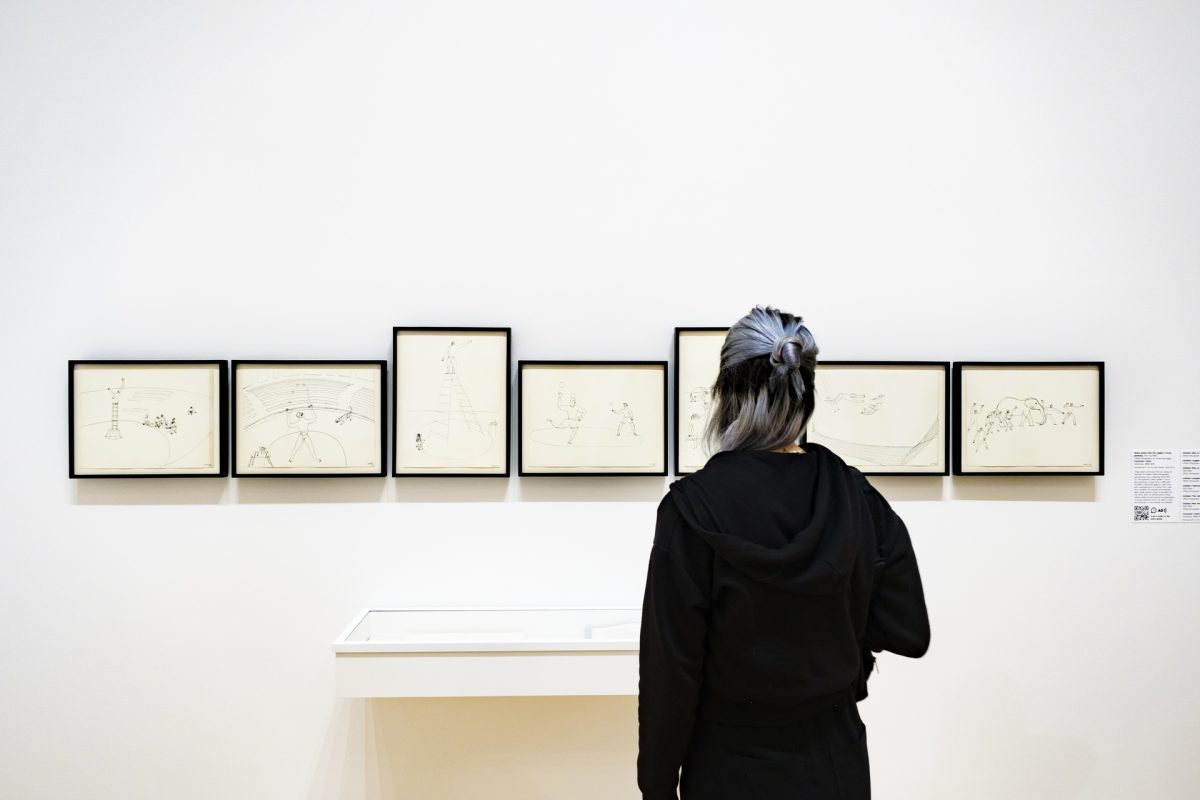Calder Smartphone Tour: Group of Circus-Themed Prints

Throughout the 1920s, Alexander Calder worked as an illustrator for the National Police Gazette. On one assignment, Calder was tasked with visiting Ringling Bros. and Barnum & Bailey Circus to sketch circus life. The experience led to a newfound interest for the circus.
A series of seven lithographs on view in Calder: In Motion, The Shirley Family Collection at SAM demonstrate Calder’s lifelong fascination with the circus. Originally drawn in 1931–32, the prints were published in New York in 1964 as part of an unbound portfolio reproducing the artist’s circus scenes. The portfolio, titled Calder’s Circus, includes a signature page by Cleve Gray and a reproduction of a letter from Joan Miró. Notably, the original line drawings were made during a time of transition for the artist: after his performative Cirque Calder (1926–31) and during his exploration of purely abstract forms—as well as voids and volumes—in his mobiles and stabiles.
On the eleventh stop of the free smartphone tour of Calder: In Motion, SAM Susan Brotman Deputy Director for Art José Carlos Diaz explains why Calder considered the circus to be a ‘highly sophisticated form of entertainment’ and shares details of the artist’s famous Cirque Calder. Listen at any time via our SoundCloud or, if you’re in SAM’s galleries, scan the QR codes next to select artworks on view to access the tour.
Group of Circus-Themed Prints, 1931–32, 1964
NARRATOR: These offset lithographs date from 1964; but they’re based on drawings that Calder made as a young man.
During the 1920s, Calder took a job illustrating for the National Police Gazette. They sent him to Ringling Bros. and Barnum & Bailey Circus to sketch circus scenes. The circus became a lifelong interest for Calder. José Diaz:
JOSÉ CARLOS DIAZ: During Calder’s youth, the circus was a great point of inspiration for him. This was a highly sophisticated form of entertainment. It had a global appeal. It included performative aspects—larger than life theatricality. It included actors, performers, and animals. And he illustrated this. He even went on to make his Cirque Calder, which was his own representation of a performative, sculptural circus that he himself was sort of the ringmaster of.
NARRATOR: The Cirque Calder dates from after Calder’s move to Paris in 1926. It was a complex and unique body of art, and included tiny performers, animals and props such as he’d observed on his sketching trips to the circus. José Diaz:
JOSÉ CARLOS DIAZ: The Cirque Calder was a reenacted performative circus made of small figurines and design sets that mimic the circus. The Cirque Calder was something that was small enough to fit in one suitcase and eventually five, and Calder would perform the Cirque Calder across the Atlantic from Paris to New York.
– Lily Hansen, SAM Marketing Content Creator
Image: Installation view of Calder: In Motion, The Shirley Family Collection, Seattle Art Museum, 2023, © 2024 Calder Foundation, New York / Artists Rights Society (ARS), New York, photo: Alborz Kamalizad.